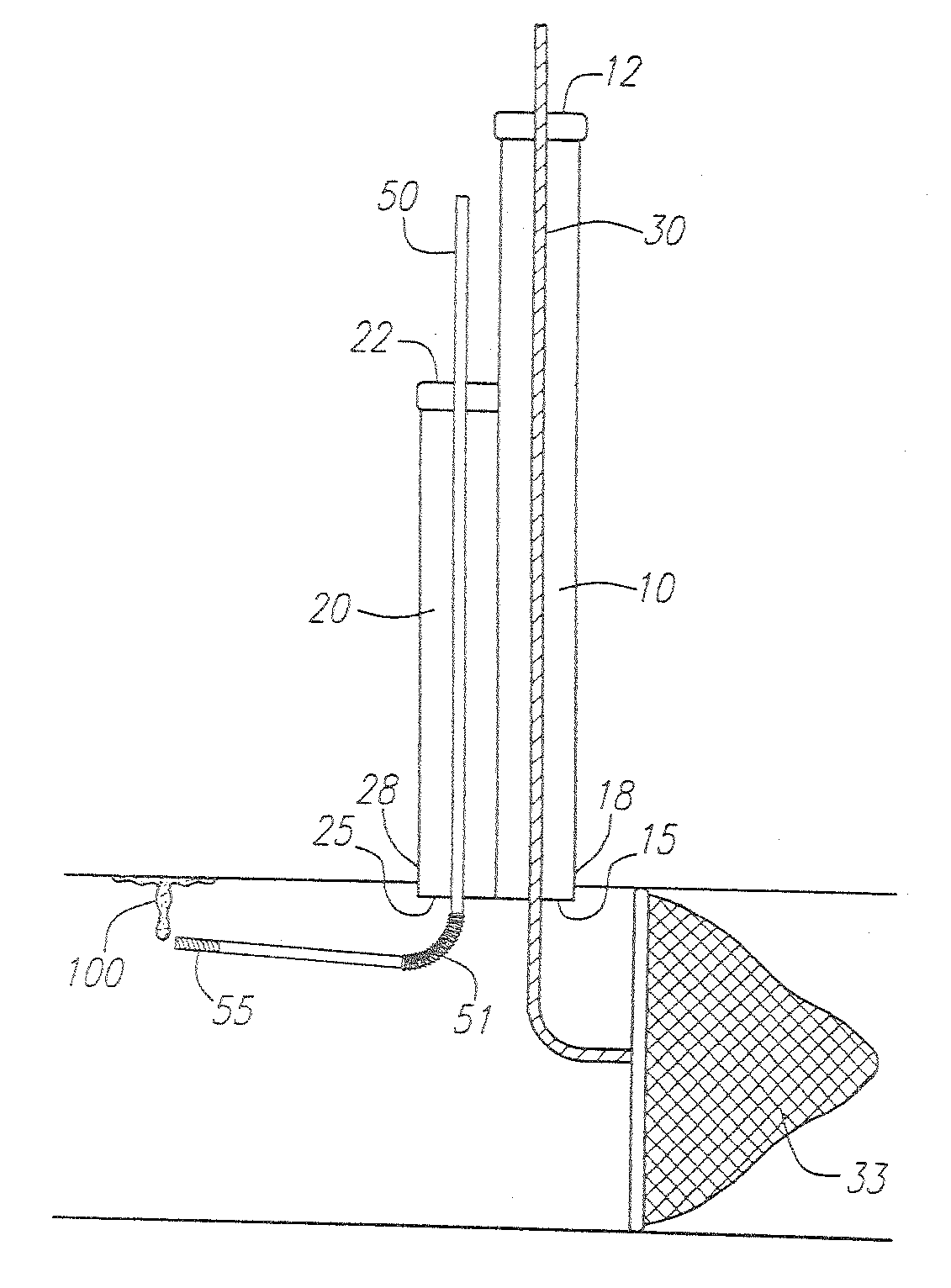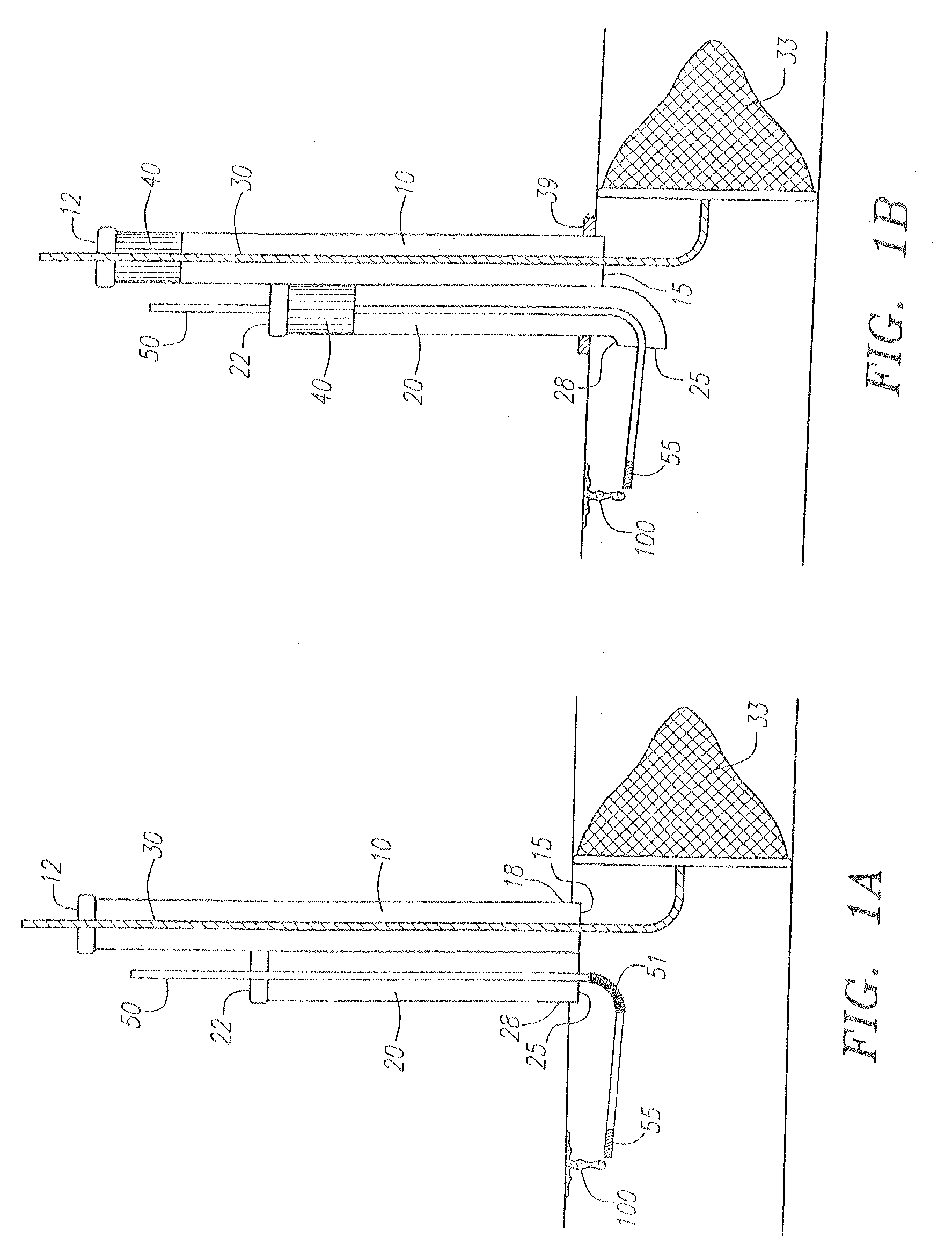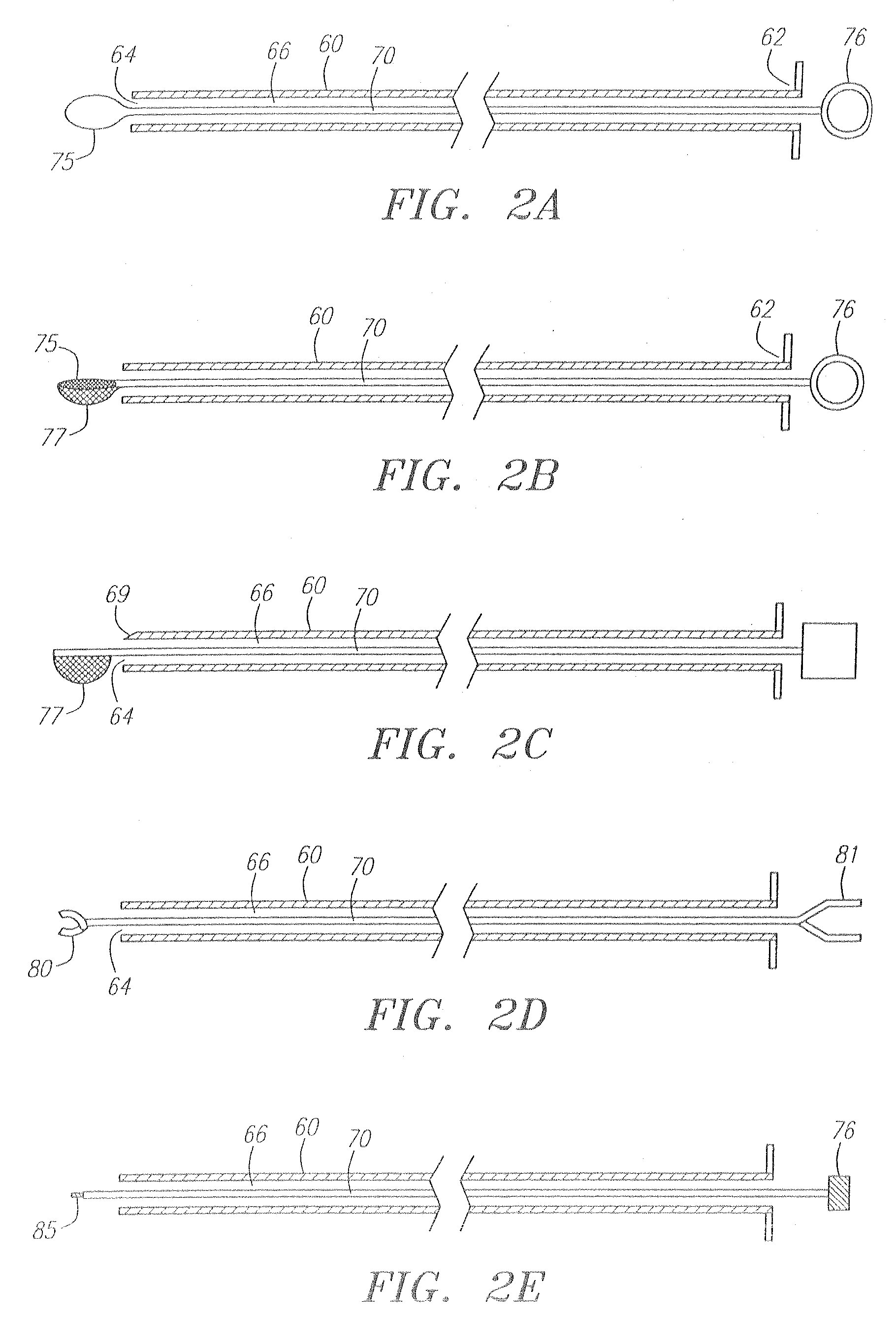Direct Access Atherectomy Devices and Methods of Use
a direct access, atherectomy technology, applied in the field of medical devices, can solve the problems of difficult and risky insertion of medical devices through the stenotic femoral artery, aortic dissection, hematoma of aortic wall, etc., to reduce the number of devices used, minimize crowding, and minimize trauma to cardiovascular tissue
- Summary
- Abstract
- Description
- Claims
- Application Information
AI Technical Summary
Benefits of technology
Problems solved by technology
Method used
Image
Examples
Embodiment Construction
[0026] The cannula systems described herein are useful for performing atherectomy on a patient's vessel, e.g., the ascending aorta, the aortic arch, the descending aorta, the femoral artery, the iliac artery, the popliteal artery and cardiac tissues, e.g., the atrium, the aortic valves, and the mitral valves. FIG. 1A depicts an embodiment of the cannula system having first lumen 10 communicating with proximal end 12 and port 15 at distal end 18, and second lumen 20 communicating with proximal end 22 and distal port 25 at distal end 28. Filter device 30 includes expandable filter 33 mounted at its distal end, and is inserted through lumen 10. Atherectomy catheter 50, which includes atherectomy assembly 55, is inserted through lumen 20 and port 25 to reach atheroma 100. In certain embodiments, the distal region of the atherectomy catheter includes bendable region 51. Bendable region 51 assumes a linear configuration relative to its proximal end when housed within lumen 20 of the cannu...
PUM
 Login to View More
Login to View More Abstract
Description
Claims
Application Information
 Login to View More
Login to View More - R&D
- Intellectual Property
- Life Sciences
- Materials
- Tech Scout
- Unparalleled Data Quality
- Higher Quality Content
- 60% Fewer Hallucinations
Browse by: Latest US Patents, China's latest patents, Technical Efficacy Thesaurus, Application Domain, Technology Topic, Popular Technical Reports.
© 2025 PatSnap. All rights reserved.Legal|Privacy policy|Modern Slavery Act Transparency Statement|Sitemap|About US| Contact US: help@patsnap.com



